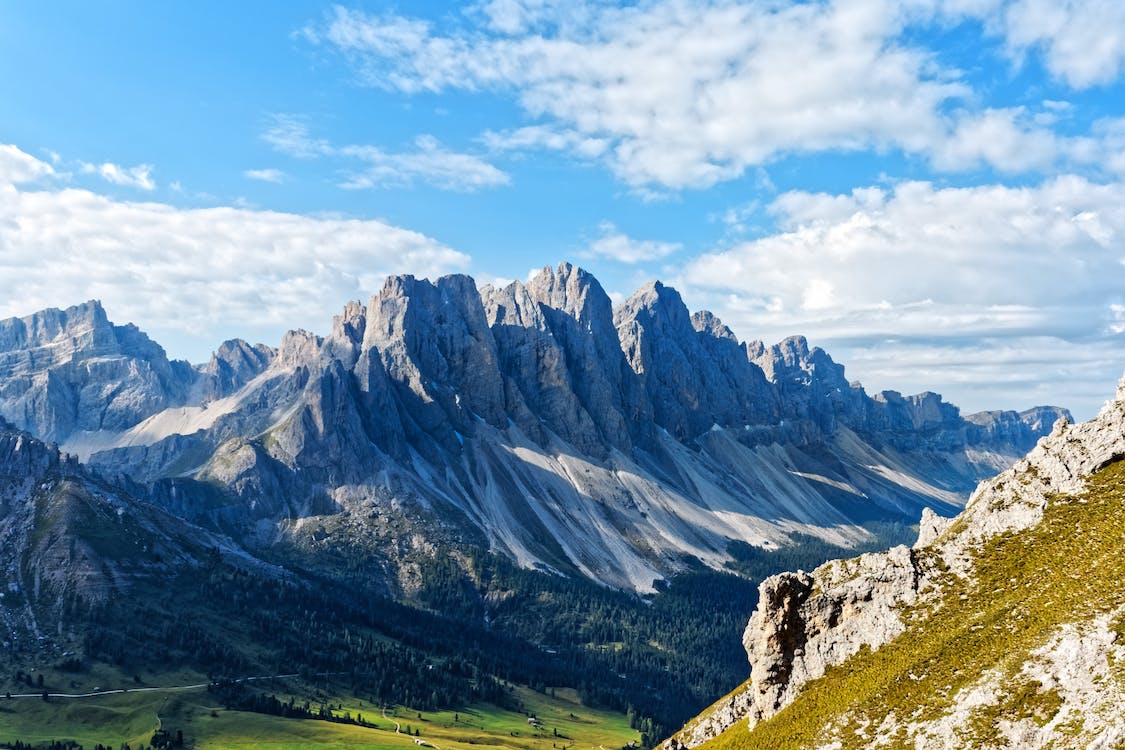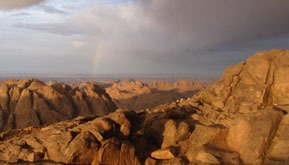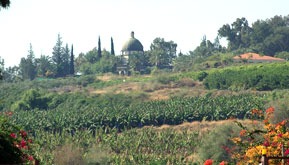The mountains have a significant connection to spirituality because it is the closest we can get to God and to the heavens. Many of the Bible’s crucial events often took place in the mountains. Indeed, these biblical mountains have become sacred places and sites for religious pilgrimages.
1. Mount Ararat
This snow-capped chain of mountains (dormant volcanoes, actually) is located on the border of Turkey and Iran. The “Greater Ararat” is the highest peak in Turkey, having an elevation of 16,854 feet above sea level. Mount Ararat is famously referred to as the resting place of Noah’s Ark during a great flood.
While the location of the ark itself remains a mystery, Mount Ararat continues to be revered. Trekkers and pilgrims from around the world would climb the mountains where the ark landed, although the exact location is still obscure.
2. Moriah
Moriah is the name of a mountain range in Jerusalem, with its highest point at 2,520 feet above sea level. The mountain is mentioned in the two books of the Old Testament:
The Book of Genesis – Moriah was the site where Abraham offered his son Isaac. Together they ascended Moriah for three days before reaching the mountain and there they prepared for a sacrifice by gathering wood for burning. When Abraham drew a knife to kill Isaac, an angel of God intercepted him. Instead, Abraham was directed by God to kill a ram instead for the sacrifice.
The Book of 2 Chronicles – King Solomon built a glorious temple for the Lord on Mount Moriah. The temple would last for around 400 years until it was destroyed by King Nebuchadnezzar’s men during the Siege of Jerusalem in 587 B.C.
 3. Mount Sinai
3. Mount Sinai
Also known by other names Mount Horeb and Gabal Musa, Mount Sinai is located in the present-day South Sinai governorate in Egypt. It rises 7,497 feet above sea level. Generally regarded as a holy site by the majority of Christians, Jews, and Muslims, thousands of visitors make a pilgrimage to Mount Sinai every year.
This mountain is most famous as the site where God gave the 10 Commandments to Moses (as recounted in the books of Exodus and Deuteronomy).
 4. Mount Carmel
4. Mount Carmel
Mount Carmel is located near the Mediterranean coast in northern Israel, a mere 17 kilometers north of Tel Aviv. It is known as the site where Elijah proved to the false prophets the existence of a true God. He did this by calling the heavens to send a fire down to a sacrifice, which consisted of a butchered bull piled on top of the firewood — and it was completely soaked with water. When the people saw how the fire came down from the heaven and consumed the entirety of the offering, the people fell on their faces, finally recognizing that God was indeed one true god.
Since the mountain is chiefly known by its connection to Elijah, Mount Carmel is sometimes called Mount Saint Elias.
5. Calvary or Golgotha
Nowadays, word “calvary” means an ordeal, a test, or a suffering. Indeed, the word is inspired by the Mount Calvary, a site where Jesus was said to have been crucified, and died for God and for our sins.
Mount Calvary is also known as Golgotha or Gagulta, which means “the place of (the) skull.”
 6. Mount of Beatitudes
6. Mount of Beatitudes
The Mount of Beatitudes is a hill located is located between Capernaum and Ginosar (Kinneret or Gennesaret), on the northwestern coast of the Sea of Galilee. Traditionally, the Mount of Beatitudes is the site where Jesus delivered the “Sermon on the Mount,” which is widely considered as the greatest Christian sermon ever.
7. Mount Olivet
Also known as the “Mount of Olives,” Mount Olivet is a mountain ridge east of Jerusalem. Once you’re on top of the ridge, it offers an unparalleled vista of Jerusalem’s Old City and surrounding areas.
Mount Olivet is the site of several pivotal scenes in the Bible. In the New Testament, the Mount of Olivet was the site where Jesus often spent his time teaching to His disciples, praying or resting. The Garden of Gethsemane is located at the foot of the mountain; it is known as the site where Jesus and His disciples prayed together the night before He was arrested. It was also from Mount Olivet where Jesus made his ascension into heaven.
In the Old Testament, King David climbed up to Mount Olivet as he escaped from his son Absalom. As he went up by the mountain, he wept.
King Solomon built pagan temples for his 700 wives on the same mountain, after he turned his back on God.
Ezekiel saw “the glory of the Lord” departing from Jerusalem and stopping “above the mountain east of it,” referring to Mount Olivet.
The prophet Zechariah predicted that the Lord would return to the Mount of Olives when “that day” (which refers to the “day of the Lord”) comes. He added that the Lord would stand on the mountain and it would be divided “in two from east to west.”


 3. Mount Sinai
3. Mount Sinai 4. Mount Carmel
4. Mount Carmel 6. Mount of Beatitudes
6. Mount of Beatitudes